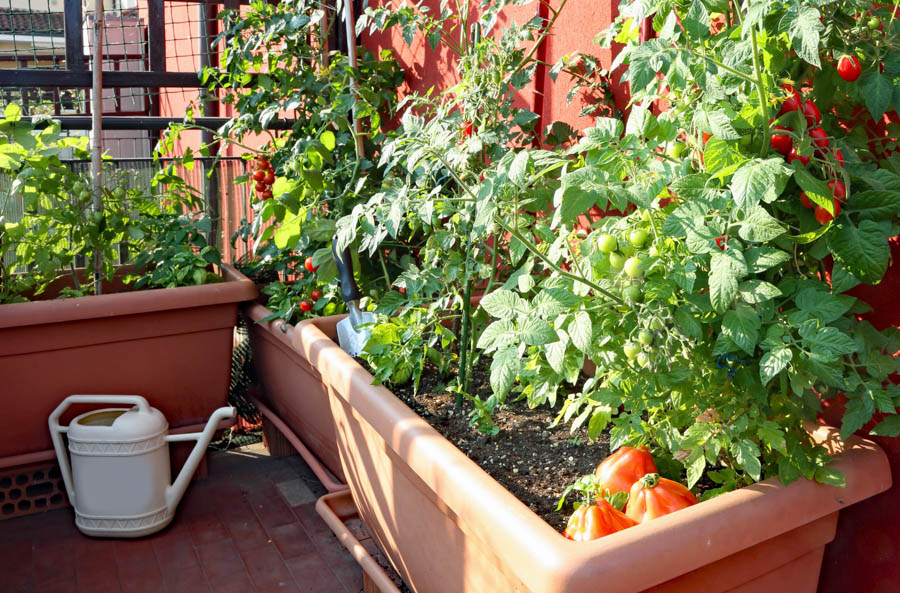5 Common Mistakes Gardeners Make When Growing Tomatoes

by C. Darren Butler and Ann Clary
If there is a single flagship (flagplant?) and most-beloved garden vegetable in California and the United States, it would be the tomato. With proper timing, careful selection of varieties, and appropriate care and maintenance, tomatoes are the juicy, flavorful, often colorful, and nutritious joy of the home garden. Increase your tomato joy by avoiding these 5 common mistakes:
Irregular Watering. Tomato plants benefit from consistent soil moisture with a partial or slight dry-down of soil between waterings to ensure that soil is not consistently wet. The amount of dry-down between waterings should be kept consistent, as irregular moisture swings and dry soil can lead to problems such as blossom end rot and fruit splitting.
Too Much Watering. There are two ways to control tomato flavor: genetics and concentrating flavor by withholding water. Once tomatoes have been planted, take advantage of your remaining opportunity to affect flavor and don’t overwater, particularly toward the end of the growing season.
Too Much Nitrogen. GardenZeus recommends providing additional nitrogen and nutrients to tomatoes after transplanting and once tomatoes begin to produce fruit. GardenZeus recommends adding nitrogen in the form of diluted urea or a cup of chicken manure diluted in 4 gallons of water (half cup if fresh manure) and mixed thoroughly, applied as a soil drench after transplanting and about once per month thereafter while plants are fruiting. But gardeners should beware: adding too much nitrogen may result in rapid growth and lush, high-carbohydrate leaves that attract insect infestation; and slowed or reduced yields. Reduce or discontinue fertilizing with nitrogen after early early summer to avoid growth flushes and an overly leafy plant that will tend to wilt during summer heat.
Improper Pruning. Indeterminate tomato plants may be pinched back when 6 inches tall to encourage compact, lateral, or spreading growth. Typically the end set of leaves on a stem is pinched or cut back to the next stem or node. GardenZeus does not recommend pinching back or removing blossoms from determinate tomato plants under most circumstances; and recommends that determinate tomatoes generally not be pruned.
Improper or Late Staking. Most tomato varieties will need staking or trellising to keep plants manageable, prevent vigorous tomato varieties from overwhelming other nearby vegetables, maximize growing space and maintain garden tidiness by requiring tomatoes to grow up rather than outward, allow for easier harvesting, and to reduce or prevent disease and pest problems caused by tomato fruits and stems resting directly on soil. Install support or trellises when germinating seeds or while seedlings are small. This will help prevent later damage to plants that may be caused by driving stakes through their root systems and when untangling or redirecting mature stems.
GardenZeus has customized growing information for tomato by zip code. To get started, enter your zip code here.
Other articles of interest:
The GardenZeus Guide to Watering Tomatoes
Growing Vigorous Tomatoes? Don’t Wait too Long to Provide Support
GardenZeus Tips for Fertilizing Tomatoes During the Growing Season

